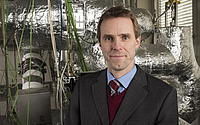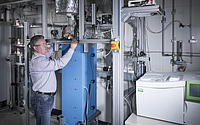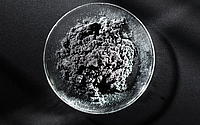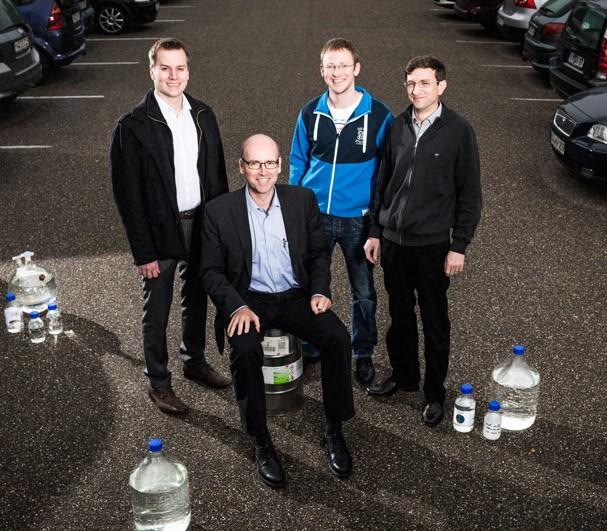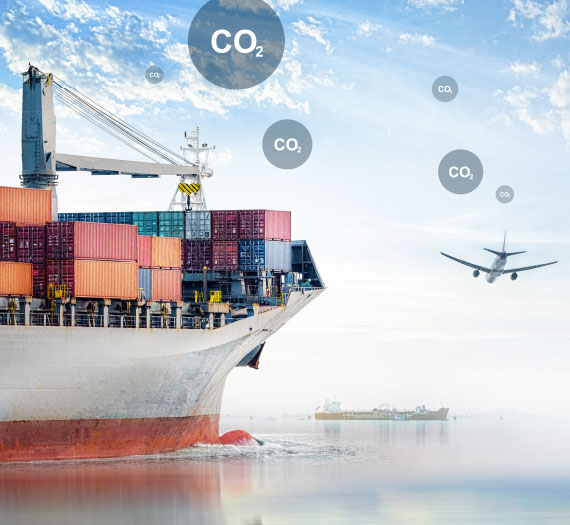- Energy
- Climate, Environment & Health
- Materials
CLIMATE-NEUTRAL HYDROGEN FROM NATURAL GAS AND BIOGAS

After the end of the coal era, natural gas in particular has established itself as the most climate-friendly fossil alternative, since it releases only about half the carbon dioxide (CO2) per kWh compared to coal when burned or converted into electricity. However, natural gas can even be used completely without releasing CO2 through the use of innovative technologies. Ideally, no carbon dioxide should be produced at all and the carbon should be captured before combustion or other use. Such an innovative process is being researched at KIT.
"For a rapid transformation of the energy system, also and especially with a view to the heating market and the transport sector, we should include innovative, climate-friendly ways of hydrogen production based on natural gas or biogas in the considerations," says Prof. Thomas Wetzel, member of the institute management at the Institute of Thermal Process Engineering at KIT and head of the Karlsruhe Liquid Metal Laboratory KALLA. His team has realized methane splitting in a liquid metal bubble column reactor to demonstrate a way to use natural gas in a CO2-neutral way and thus make an important contribution to the energy revolution.
Splitting methane into its components carbon and hydrogen by heating is not new. It can be done reliably in the laboratory, for example, in small reactors with heated walls and temperatures beyond 1,000 degrees Celsius. A major problem for implementation on a technical scale, however, is the tendency of carbon to settle on hot surfaces and thus block the reactor after a short time. To prevent the process of settling, the IASS and KIT have devoted a joint project to a new approach: pyrolysis using liquid metal.
The heart of the research project is an upright bubble column reactor filled with liquid tin at about 1,200 degrees Celsius, which is set up at KIT. The methane gas is introduced at the bottom of the reactor through a filling nozzle, where it is released in the form of bubbles. Due to the difference in density, these bubbles rise to the top and represent kind of micro-reactor chamber for the splitting process during pyrolysis. Due to the hot tin, the methane quickly reaches the required reaction temperature and splitting takes place while the bubbles are still rising. The surface of the bubbles acts as a wall on which the released carbon is deposited. The liquid tin thus not only serves as a heat transfer medium, but above all prevents the carbon layers from adhering to the column wall. When the bubbles arrive at the top of the liquid metal reactor, they burst and release a mixture of hydrogen, carbon and residual methane. The solid carbon is separated from the gas mixture. The hydrogen is separated using a gas separation process, so that two reaction products are finally presented individually. The residual methane is added to the pyrolysis cycle again. The very pure carbon produced as a by-product in the process is in demand in many fields of application: from modern building and construction materials to high-tech applications such as energy storage.
The great potential of the development driven by the research team from KIT and IASS was for example confirmed by the award of the Innovation Award of the German Gas Industry. Further evidence of the level of innovation and relevance of the technology is the adaptation of the process in other research. "Worldwide, several groups are researching processes for methane pyrolysis. We see that our experimental reactor design published some time ago is now being adapted and further developed by some of these groups," reports Prof. Wetzel.
Meanwhile, the team from KIT is already taking the next steps, together with its industrial partner Wintershall Dea GmbH. For further development of the technology, the main focus is on findings that can serve to scale up from laboratory setups to industrial-scale plants.
"An important driver for our research is the conviction that natural gas production will continue worldwide for a long time. We therefore need to demonstrate a technical solution for climate-neutral and responsible use."
"Our goal is to produce clean hydrogen. Through our joint research project, we are actively shaping the climate-neutral future of our energy systems."
Pictures: Patrick Langer / KIT· Amadeus Bramsiepe / KIT· Markus Breig / KIT
